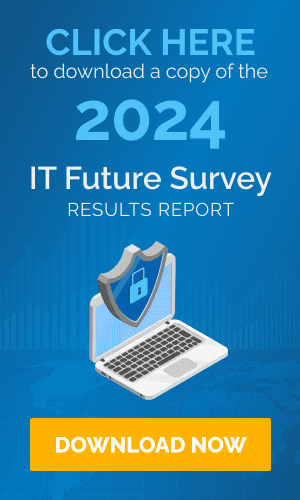As the number of connected devices continues to escalate at an unprecedented rate, effective management and monitoring of IT infrastructure has become paramount. This brings us to the cornerstone of IT management and monitoring: the remote monitoring and management (RMM) agent. This blog post delves deep into what an RMM agent is, its significance, how it operates and the unparalleled benefits it offers. Furthermore, we’ll explore how Kaseya’s RMM solution, VSA, leverages RMM agents to provide a comprehensive and unified approach to IT management.
The role of RMM agents in modern IT management
RMM agents are pivotal in modern IT management, functioning as the foundational tools that IT professionals rely on to maintain and optimize network and device performance. Installed on each device within an IT infrastructure, these agents facilitate a seamless flow of critical data back to the IT administrators, including detailed system health and performance metrics. This continuous stream of data is essential for the proactive management of IT environments, allowing for early detection and resolution of potential issues.
RMM agents empower IT teams to perform a wide array of tasks remotely, from routine maintenance and updates to troubleshooting and repairing problems, often without interrupting the end-user experience. This capability is crucial in today’s fast-paced business environments, where downtime can lead to significant losses. Furthermore, the automation features inherent in RMM solutions streamline many routine processes by reducing the workload on IT staff and minimizing the risk of human error.
By providing real-time visibility into the health and performance of all devices within the network, RMM agents enable IT professionals to make informed decisions, prioritize actions based on severity and implement solutions swiftly. This proactive approach to IT management not only enhances system reliability and performance but also significantly improves the overall user experience by contributing to higher productivity and satisfaction levels across the organization.
The importance of RMM agents
RMM agents play a pivotal role in the RMM ecosystem. With the explosion of IoT devices, virtual hosts, mobile devices, cloud services and the complexity of managing these endpoints increases exponentially. Coupled with the growing dispersion of workforces and the rise in cyberthreats, RMM agents become indispensable in maintaining operational efficiency and securing networks against vulnerabilities.
How does an RMM agent work?
The operational components of an RMM agent represent a sophisticated framework designed to enhance IT infrastructure efficiency and reliability. These components work in tandem to provide comprehensive coverage of device and network management, detailed as follows:
- Installation: This initial phase involves deploying the RMM agent on all devices within the network, including servers, workstations and even mobile devices. The deployment process is designed to be seamless and unobtrusive, ensuring minimal disruption to daily operations. Installation can often be done remotely by allowing rapid setup across multiple devices and locations.
- Configuration: Post-installation, the RMM agent is meticulously configured to monitor a wide array of system metrics and performance indicators. This customization allows IT professionals to tailor the monitoring to the specific needs of their infrastructure by focusing on critical areas such as CPU usage, disk activity, network performance, software installations and security vulnerabilities. This targeted monitoring ensures that the most relevant and impactful data is collected.
- Communication: The RMM agent continuously communicates the gathered data back to a central RMM server. This communication is secure and efficient, designed to transmit comprehensive diagnostic information without impacting system performance. The data transmitted includes not only real-time performance metrics but also alerts and notifications regarding system health, updates and security threats. This constant flow of information is crucial for maintaining an up-to-date overview of the IT landscape.
- Action: The final component involves the analysis of the data by IT professionals and the subsequent actions taken to address any identified issues. This could range from automated responses predefined in the RMM system for common problems to complex troubleshooting and problem-solving conducted remotely by the IT team. The goal is to proactively manage the IT infrastructure by resolving potential issues before they escalate into significant problems or system downtime. This proactive approach is facilitated by the RMM’s ability to not only alert IT staff about issues but also provide them with the necessary insights to diagnose and resolve problems efficiently.
The operational components of an RMM agent create a robust framework that supports the proactive, efficient and remote management of IT infrastructures. By leveraging these components, organizations can ensure an optimal performance of their IT assets, thereby supporting their overall business objectives.
What is monitored by RMM agents?
RMM agents serve as the foundation for comprehensive IT infrastructure oversight by meticulously monitoring a wide range of system and network metrics to ensure optimal performance and security. Let’s delve deeper into the critical areas covered by these agents:
- System performance metrics: These agents continuously assess the performance of systems, focusing on metrics such as CPU usage, memory consumption and disk activity. By tracking these indicators, RMM agents can identify patterns that suggest inefficiencies or impending issues by enabling IT professionals to take corrective action swiftly.
- Network usage and connectivity: They monitor network health by assessing traffic, bandwidth utilization and connection quality, crucial for detecting performance bottlenecks and safeguarding against connectivity disruptions.
- Health status of hardware, software and applications: RMM agents ensure the optimal functioning of hardware components, software updates and application performance, automating inventory management and maintenance tasks to enhance operational efficiency.
- Security events and potential threats: By continuously scanning for unauthorized access, malware and security breaches, RMM agents play a critical role in early threat detection and mitigation by fortifying cybersecurity defenses.
By monitoring these crucial aspects of IT infrastructure, RMM agents empower businesses to maintain high levels of performance and reliability across their digital environments. This holistic approach to monitoring is what makes RMM agents an indispensable tool in the arsenal of modern IT management.
Key applications and use cases
RMM agents are pivotal in facilitating a wide range of IT management functions that are essential for the smooth operation of both large-scale networks and individual devices. Below, we delve into their key applications and use cases, highlighting their versatility and indispensability in modern IT environments.
- Discovery and monitoring of devices and endpoints: Automating the discovery process, RMM agents provide a complete inventory and continuous monitoring for optimal and secure device functionality.
- Automated maintenance, including patch management: They streamline routine software patching, ensuring systems are safeguarded against vulnerabilities with minimal manual intervention.
- Remote troubleshooting and support: Facilitating remote device access for troubleshooting, RMM agents expedite issue resolution, enhancing end-user satisfaction by reducing downtime.
- Performance reporting and analytics: Collecting detailed data, these agents offer insights into IT infrastructure health, aiding in informed decision-making for system improvements.
- Compliance and policy enforcement: Essential in regulated industries, RMM agents automate compliance tasks and report generation, maintaining standards and mitigating risks.
Each of these applications underscores the critical role that RMM agents play in enhancing operational efficiency, security and compliance in today’s complex IT landscapes. Their ability to automate and centralize key IT management tasks makes them an invaluable tool for IT teams across various sectors.





